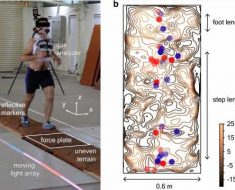The combination of lurbinectedin (Zepzelca, Jazz Pharma/Pharma Mar) and doxorubicin did not improve overall survival compared with standard of care as second-line treatment of small cell lung cancer (SCLC) but had better tolerability, and so should be considered as an option, says the lead investigator of the phase 3 ATLANTIS trial.
“Comparable efficacy results” were observed between lurbinectedin plus doxorubicin and a standard-of-care control group, said lead researcher Luis Paz-Ares, MD, PhD, Hospital Universitario 12 de Octubre, Madrid, Spain.
But the lurbinectedin group had “a better safety and tolerability profile, particularly in terms of hematologic toxicities,” he added.
Paz-Ares believes that, taken together, the results “support the clinical benefit of lurbinectedin” in the second-line treatment of SCLC.
The research was presented September 10 at the IASLC 2021 World Conference on Lung Cancer.
Lurbinectedin is a novel anticancer agent that both inhibits transactivated transcription and modulates the tumor microenvironment. It was granted accelerated approval by the US Food and Drug Administration (FDA) in 2020 for patients with metastatic SCLC with disease progression after or during treatment with platinum-based chemotherapy.
The accelerated approval was based on a monotherapy clinical trial in 105 patients, published in Lancet Oncology, in which the drug was associated with an overall response rate of 35.2% and a median duration of response of 5.3 months.
In the meantime, a phase 1 dose-escalation study suggested that combining lurbinectedin with doxorubicin achieved high activity in patients with second-line SCLC, consistent with results from in vitro assays.
Charles M. Rudin, MD, PhD, who was not involved with the study, wondered whether ATLANTIS was “even really the right trial” for examining the effect of lurbinectedin in SCLC.
“What we would have really liked” is a phase 3 study that “validated” the results seen in the original monotherapy trial but “what we got instead was this trial.”
Rudin, who is the Sylvia Hassenfeld professor and chief of thoracic oncology at Memorial Sloan Kettering Cancer Center, New York City, continued that there were nevertheless some “positive outcomes from this negative trial.”
He said that there are “some hints of what might be a durable benefit,” both in terms of progression-free survival (PFS) and duration of response with lurbinectedin plus doxorubicin versus control therapy.
“And the real win here is on the toxicity side; even with the addition of doxorubicin, we see substantial advantages over the control arm,” he noted.
Turning to the “inevitable coulda, shoulda, woulda for this clinical trial,” Rudin said, “unfortunately, we have to acknowledge that ATLANTIS joins the ranks of negative trials in patients with recurrent small cell lung cancer.”
But nevertheless, it “offers support for the efficacy of lurbinectedin,” although his belief is one should “stick to the single agent,” and the safety profile is “superior.”
“To me, the real outcome,” Rudin said, is that it supports the idea that lurbinectedin “offers a new platform on which to build better combination therapies for recurrent small cell lung cancer.”
After all, the “oncologists’ glass is always half full,” he added.
Over on Twitter, Stephen V. Liu, MD, director of thoracic oncology at Georgetown University, Washington, DC, said the key issue with ATLANTIS is “it probably did not ask the question we wanted answered.”
He doubted whether the combination of lurbinectedin and doxorubicin added anything in terms of durable responses, “but certainly added toxicity,” while he lamented the use of a lurbinectedin dose (2 mg/m2) that was lower than that used in the trial that led to FDA approval (at 3.2 mg/m2).
In a subsequent tweet, Liu commented that “what we’re left with is a negative phase 3 trial that was to serve as confirmation of the FDA accelerated approval of lurbinectedin for SCLC.”
“Will the indication be withdrawn?” he asked, “Or modified?”
Liu nevertheless believes there is “still value” for the drug, “especially in platinum-resistant SCLC.”
More Details of the ATLANTIS Study
For ATLANTIS, researchers enrolled patients with SCLC who had received one prior line of chemotherapy, had measurable disease, and had a relatively good performance status. They excluded patients with a chemotherapy-free interval (CTFI) < 30 days.
Participants were randomized 1:1 to 2 mg/m2 lurbinectedin plus doxorubicin or standard-of-care topotecan or cyclophosphamide, doxorubicin, and vincristine (CAV). In the experimental group, combination therapy was given for a maximum of 10 cycles, after which lurbinectedin was to be continued at 3.2 mg/m2 once every 3 weeks.
All patients received primary prophylaxis with granulocyte colony-stimulating factor, and treatment was continued until disease progression or unacceptable toxicity.
A total of 613 patients were included. The two treatment groups were well balanced, and “very typical of patients in this setting of relapsing small cell lung cancer,” said Paz-Ares.
The primary endpoint of overall survival was not significantly different between the two treatment groups.
Lurbinectedin plus doxorubicin was associated with a median survival of 8.6 months versus 7.6 months in the control group, at a hazard ratio of 0.967 (P = .70).
Subgroup analysis showed that the “results were very similar” across patient groups, reported Paz-Ares, which “suggests that no patient subgroup was clearly benefiting from this treatment.”
There was, however, a significant difference in PFS between groups, at a hazard ratio in favor of lurbinectedin plus doxorubicin of 0.831 (P = .0437), although the median time to progression was the same for both groups, at 4.0 months.
“When we analyzed which patients were benefiting, we realized that likely those patients with a higher CTFI of more than 180 days and those patients with prior PD-1/L1 therapy, were more likely to benefit,” said Paz-Ares.
In contrast, patients with a “very short” CTFI of less than 90 days or with central nervous system involvement appeared to have “less benefit.”
The overall response rate was similar between the lurbinectedin plus doxorubicin and control groups (31.6% vs 29.7%), although the median duration of response was longer in the experimental group (5.7 vs 3.8 months; hazard ratio, 0.581; P = .012).
The degree of response also varied by length of CFTI, with the greatest response to lurbinectedin plus doxorubicin seen in patients with a CFTI > 180 days, at 41.9%, while the smallest, at 20.2%, was in patients with a CFTI < 90 days.
The safety analysis showed that lurbinectedin plus doxorubicin was associated with lower rates of any grade ≥ 3 adverse events compared with controls (47.2% vs 75.4%), including fewer grade 4 adverse events (16.2% vs 54.7%), as well as fewer deaths (0.3% vs 3.5%).
Specifically, patients treated with lurbinectedin plus doxorubicin had significantly lower rates of grade ≥ 3 anemia (14.5% vs 31.1%) compared with the control group (P < .0001).
The experimental group also had significantly lower rates of neutropenia (37.0% vs 69.2%; P < .0001), febrile neutropenia (4.0% vs 8.3%; P = .0377), and thrombocytopenia (13.9% vs 31.1%; P < .0001) compared with controls.
At the end of his presentation, Paz-Ares confirmed that new combinations of lurbinectedin with other cytotoxic agents, such as irinotecan, and immune checkpoint inhibitors “are being explored.”
The study was sponsored by Pharma Mar. Paz-Ares has reported relationships with Alkermes, Altum sequencing, Amgen, AstraZeneca, Bayer, BMS, Daiichi Sankyo, GSK, IO Biotech, Ipsen, Janssen, Lilly, Merck Serono, Mirati, MSD, Novartis, Pfizer, Pharma Mar, Roche, Sanofi, Takeda, and Tesaro. Rudin has reported relationships with AbbVie, Amgen, AstraZeneca, Bridge Medicines, Earli, Epizyme, Genentech/Roche, Harpoon Therapeutics, Ipsen, Jazz, Lilly, and Syros.
IASLC 2021 World Conference on Lung Cancer: Abstract PL02.03. Presented September 10, 2021.
For more from Medscape Oncology, join us on Twitter and Facebook.
Source: Read Full Article





